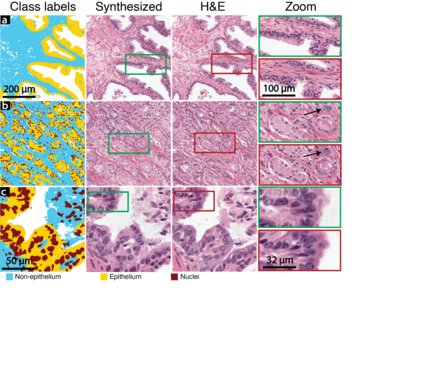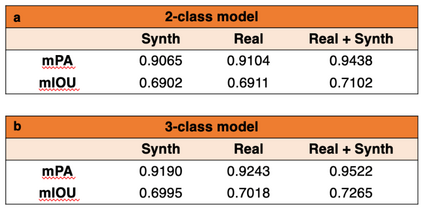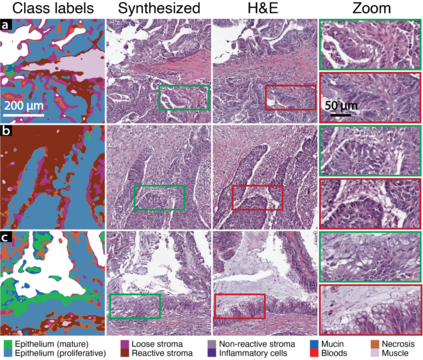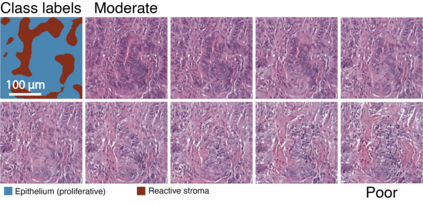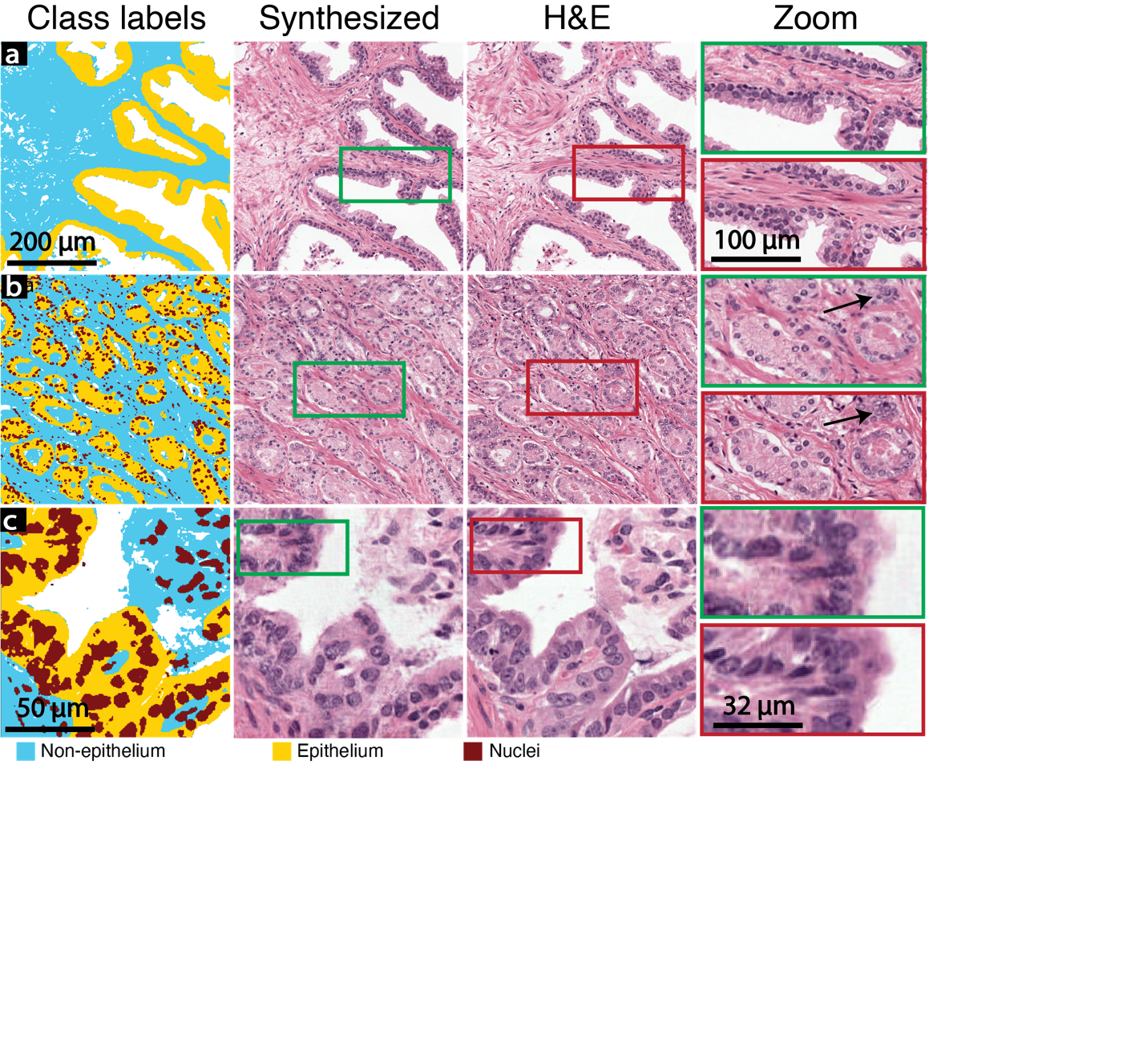An optical microscopic examination of thinly cut stained tissue on glass slides prepared from a FFPE tissue blocks is the gold standard for tissue diagnostics. In addition, the diagnostic abilities and expertise of any pathologist is dependent on their direct experience with common as well as rarer variant morphologies. Recently, deep learning approaches have been used to successfully show a high level of accuracy for such tasks. However, obtaining expert-level annotated images is an expensive and time-consuming task and artificially synthesized histological images can prove greatly beneficial. Here, we present an approach to not only generate histological images that reproduce the diagnostic morphologic features of common disease but also provide a user ability to generate new and rare morphologies. Our approach involves developing a generative adversarial network model that synthesizes pathology images constrained by class labels. We investigated the ability of this framework in synthesizing realistic prostate and colon tissue images and assessed the utility of these images in augmenting diagnostic ability of machine learning methods as well as their usability by a panel of experienced anatomic pathologists. Synthetic data generated by our framework performed similar to real data in training a deep learning model for diagnosis. Pathologists were not able to distinguish between real and synthetic images and showed a similar level of inter-observer agreement for prostate cancer grading. We extended the approach to significantly more complex images from colon biopsies and showed that the complex microenvironment in such tissues can also be reproduced. Finally, we present the ability for a user to generate deepfake histological images via a simple markup of sematic labels.
翻译:对从FFPE组织区块中制作的玻璃幻灯片上薄割的沾染组织进行光学微观显微镜检查,这是组织诊断的黄金标准。此外,任何病理学家的诊断能力和专门知识都取决于他们在常见和稀有变异形态方面的直接经验。最近,采用了深层次的学习方法来成功地显示这类任务的高度准确性。然而,在专家一级获得附加说明的图像是一项昂贵和耗时的工作,人工合成的生理图象会大有助益。在这里,我们提出一种方法,不仅产生能复制常见疾病的诊断性细胞图象,而且还提供用户生成新的和稀有形态特征的能力。我们的方法涉及开发一种基因化对抗网络模型,以综合受阶级标签制约的病理图象。我们研究了这一框架在合成现实的先质和结肠图象方面的能力,并评估了这些图象在提高机器学习方法的复杂诊断能力方面的实用性,以及由经验丰富的解算性病理学家小组使用这些图象图象图象图象,同时提供一种用户能力生成新的和罕见形态图象的能力。我们通过一个类似的组织图象分析框架进行了类似的模型的合成数据分析,我们进行一个比较的比较的模型数据分析,最后的模型,我们进行了一个比较的研判了一种比较的模型,我们能的模型,我们进行了一种比较的研判的研判的研判的研判的研判的研判的比。

